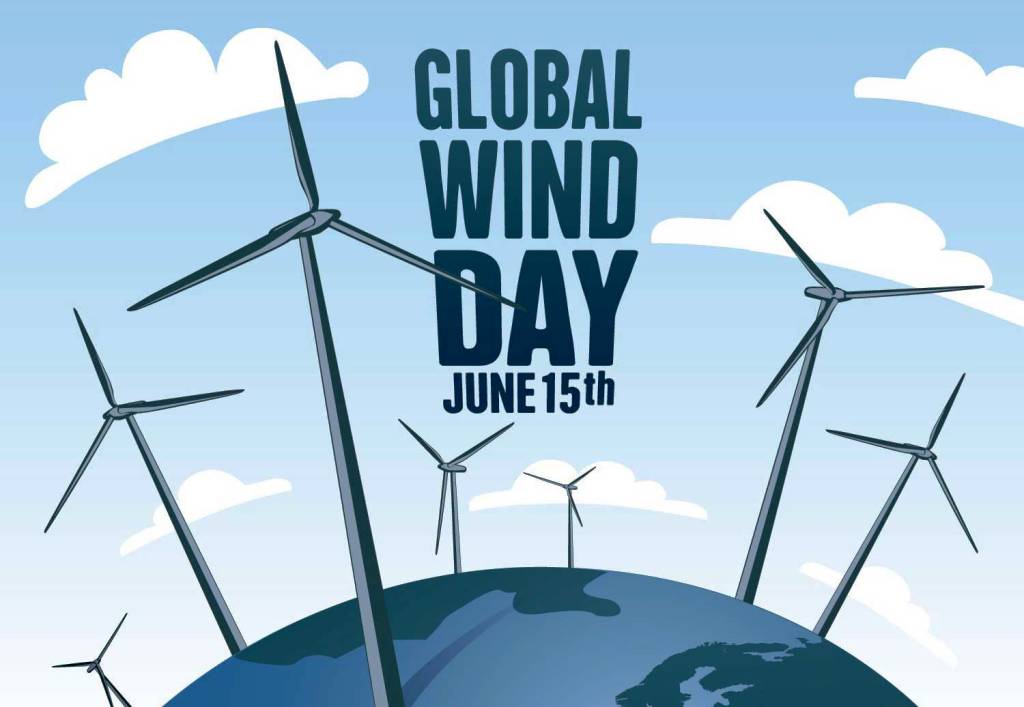By – Dr. N. Munal Meitei
Global Wind Day is a worldwide event held on June 15. This day is celebrated to know about wind energy, its power and the possibilities it holds to change the worldfor a cleanfuture environment. The wind is created by three simultaneous events: the sun heats the atmosphere unevenly, surface irregularities of the Earth and the Earth’s rotation.
The world is running for the wind energy and the people driving the energy transition. The theme for 2025, “Day of Community Action” emphasizes the climate impacts and the urgent need for asecure and clean energy, – it’s a call to action.
Global Wind Day has brought together communities, industry leaders, governments and campaigners across the world for a clean, cost-effective and homegrown power source transforming our global energy system to push for a fairer and green energy future.
This campaign highlights the benefits of wind energy and calls for greater ambition to scale up deployment and delivering for a clean power, creating jobs and contributing to a more sustainable and secure future.
Wind energy is one of the fastest-growing sources of electricity globally. Wind power is a cornerstone of the shift away from fossil fuels. It is now among the cheapest sources of new electricity in many markets, enabling countries to decarbonize their grids rapidly and affordably. By reducing reliance on imported fossil fuels, wind energy boosts energy independence and shields economies from volatile global markets and geopolitical shocks.To limit the global warming to 1.5°C, we must triple renewable energy capacity by 2030. Wind energy will surely provide the promise.
Wind energy is the most established and mature renewable energy source reducing greenhouse gas and protecting the environment. As fossil energy supplies dwindle, the development of alternative energy sources has become a necessity. Simultaneously, global energy demand is increasingly rising, placing the planet on the brink of a global energy crisis. Furthermore, the widespread use of traditional energy sources pollutes the atmosphere and leads to climate crisis.
Wind and other renewable energy sources, on the other hand, are feasible and clean alternatives to fossil fuels. Wind is one of the most cost-effective and efficient renewable energy sources because of its low operating costs and broad availability makes it one of the fastest-growing clean energy technologies.
Wind power is now cheaper than fossil fuels—even existing coal plants—in many parts of the country. Wind power has a lot of room to grow. Wind and other renewables are key for cleaning up the power sector, such as transportation—when we electrify cars, trucks, and buses—and home lighting.
Wind stands to be a leader in what’s to come for fighting climate change. The most recent report from the UN Intergovernmental Panel on Climate Change showed that wind and solar had by far the greatest potential for cutting climate pollution in the energy sector, with lots of each that could be available more cheaply than the fossil fuels.
Global wind-generation capacity onshore and offshore has increased by nearly 75 times in the last two decades, from 7.5 gigawatts in 1997 to 564 GW in 2018accounting for 16 % of all renewable energy generation.The largest wind power market in the world is China, with a capacity of over 237 GW of wind power installed followed by U.S and Germany.
India ranks fourth in wind power capacity with 42.8 GW as of April 2023 and has a huge potential for both onshore and offshore wind energy production.In India, the Ministry of New and Renewable Energy (MNRE) with the theme of “Pawan – Urja: Powering the Future of India”has set the target of 500 GW renewable energy capacity by 2030.
Wind energy is vital for India’s transition to a low-carbon economy and achieving its goals of 50% non-fossil fuel-based energy by 2030 and Net Zero by 2070.Tamil Nadu installs highest wind power capacity till June 2022 followed by Gujrat and Karnataka.The National Offshore wind energy policy was notified in October 2015 with an objective to develop the offshore wind energy in the Indian Exclusive Economic Zone (EEZ) along the Indian coastline of 7600 km.
Manipur being a hilly state, has the potential for wing energy. Studies indicates that the mean wind power density is generally low for large-scale conventional wind turbine projects, however,in hilly districts like Senapati, Ukhrul, Chandel, Tengnoupal and Churachandpur show potential for wind energy development, particularly with vertical axis wind turbines. Therefore, on coming global Wind Day, let’s groom our wind energy for a clean and green Environment.
(The author is Environmentalist, [email protected])
Global Wind Day for a Clean Environment
170



